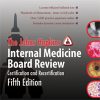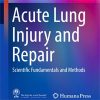The Relationship Between Heart Rate and Body Temperature in Critically Ill Patients
emra.orgIn critically ill patients, increased metabolic demand results in increased cardiac output. Increased heart rate in these patients can also be secondary to other conditions such as hypovolemia, heart failure, anxiety, or pain.
Previous studies have shown that heart rate is directly correlated with temperature.
These studies however are limited to children, emergency room patients, or healthy volunteers thus limiting their extrapolation to critically ill patients.
A better understanding of the relationship between temperature and heart rate could improve clinical decision making by identifying what is an appropriate increase in heart rate caused by an increased temperature as compared to an increase in heart rate secondary to another cause.
In critically ill adult patients for each 1°C increase in body temperature there is an associated 8 beat/min increase in heart rate.
In febrile and tachycardic patients, the heart rate should be evaluated in this context to determine if the patient’s heart rate is an appropriate response to their temperature when managing other variables that are correlated with heart rate such as fluid status or pain and before pursuing a further workup investigating a patient’s tachycardia.

















